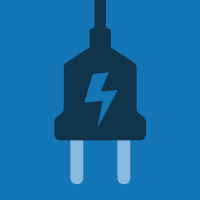Topic Menu
► Topic MenuTopic Editors




Polymers for Electrical Systems
Topic Information
Dear Colleagues,
It is our pleasure to inform you that this Topic on “Polymers for Electrical Systems” is now open for submission. The aim of this Topic is to report recent developments in innovative diagnostic approaches and new materials for applications in electrical systems. This includes polymer composites with tailored or improved electrical properties, e.g., insulating, electroactive, piezoelectric, and semiconductive materials. Selected contributions are invited which provide reviews and analyses of the main polymer properties and degradation mechanisms with focus on their effects on system reliability and properties at various scales (from physical–chemical to mechanical and electrical behavior). Potential topics include but are not limited to:
- Development and validation of innovative materials to be used in electrical systems;
- Multiscale analyses of degradation and aging mechanisms inside electrical systems, e.g., cables and transformers;
- Lab-scale techniques for cable aging assessment;
- Development of non-destructive testing techniques for monitoring the health of electrical equipment;
- Lifetime prediction and reliability of electrical systems under single and multi-stresses.
Dr. Simone Vincenzo Suraci
Dr. Alessandro Mingotti
Prof. Dr. Xavier Colin
Dr. Davide Fabiani
Topic Editors
Keywords
- dielectrics
- reliability and aging of electrical systems
- polymer aging
- electrical insulation
Participating Journals
| Journal Name | Impact Factor | CiteScore | Launched Year | First Decision (median) | APC |
|---|---|---|---|---|---|

Electricity
|
1.8 | 5.1 | 2020 | 26 Days | CHF 1200 |

Energies
|
3.2 | 7.3 | 2008 | 16.2 Days | CHF 2600 |

Materials
|
3.2 | 6.4 | 2008 | 15.2 Days | CHF 2600 |

Polymers
|
4.9 | 9.7 | 2009 | 14 Days | CHF 2700 |

Sensors
|
3.5 | 8.2 | 2001 | 19.7 Days | CHF 2600 |

Preprints.org is a multidisciplinary platform offering a preprint service designed to facilitate the early sharing of your research. It supports and empowers your research journey from the very beginning.
MDPI Topics is collaborating with Preprints.org and has established a direct connection between MDPI journals and the platform. Authors are encouraged to take advantage of this opportunity by posting their preprints at Preprints.org prior to publication:
- Share your research immediately: disseminate your ideas prior to publication and establish priority for your work.
- Safeguard your intellectual contribution: Protect your ideas with a time-stamped preprint that serves as proof of your research timeline.
- Boost visibility and impact: Increase the reach and influence of your research by making it accessible to a global audience.
- Gain early feedback: Receive valuable input and insights from peers before submitting to a journal.
- Ensure broad indexing: Web of Science (Preprint Citation Index), Google Scholar, Crossref, SHARE, PrePubMed, Scilit and Europe PMC.

